The Archaeological Site of Amphiareion of Oropos was an ancient Greek sanctuary and a healing site. The sanctuary was founded in the late 5th century BCE (431-415 BCE) and was dedicated to the respected and beloved Amphiaraus.
Ancient Oropos was located where seaside Skala Oropos is today and was a port of particular strategic importance, just across from Evia Island. This special position of Oropos was the cause of its subordination to the more powerful city-states of the time, the Eretrians (Evia town), the Boeotians, and of course the Athenians.
Some links in this post are to affiliate sites. I may earn a small commission at no expense if you purchase something through them.
The Sanctuary of Amphiareion in Oropos
Amphiareion was founded during the Athens Classical Times. Pericles, Athens’ ruler at the time, built the famous temples on Acropolis Hill. Parthenon Temple was built during this time (447-432 BCE).
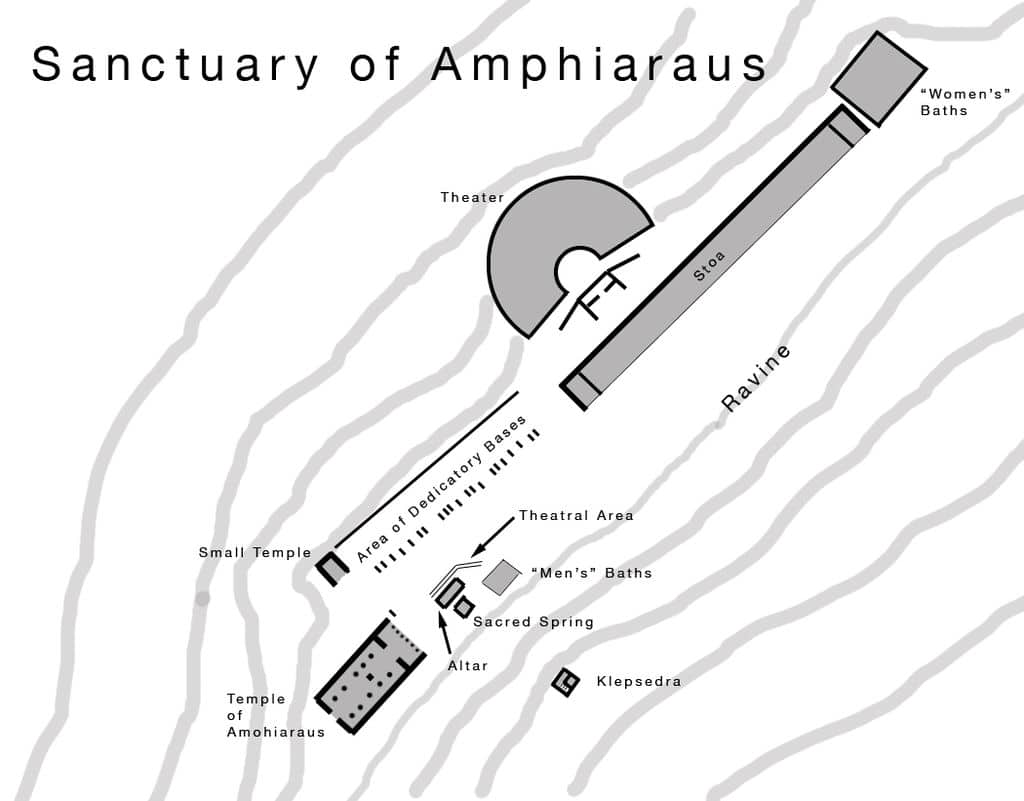
The Amphiareion continued to operate well into the 4th century CE and until the end of the Roman empire, for nearly 700 years. We don’t know when exactly the Sanctuary was abandoned. The Oracle of Amphiaraus was one of the five renowned oracles in Greece. The other four were the Oracle of Apollo at Delphi, the Oracle of Zeus at Dodona, the Oracle of Abae in Phocis, and the Oracle of Trophonius in Livadia Beotia.
Who was Amphiaraus?
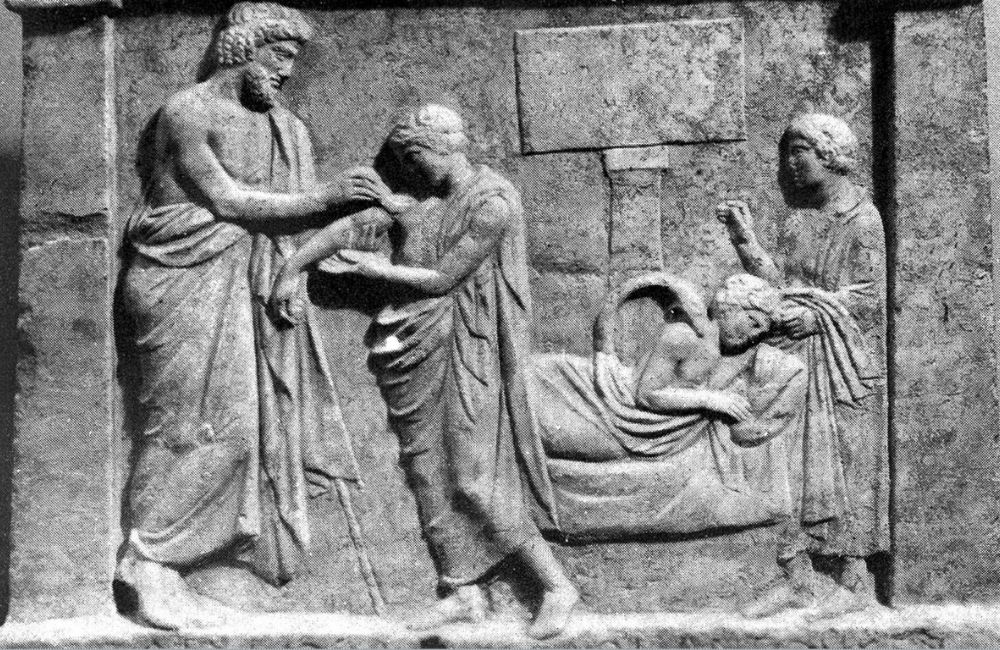
According to Greek mythology, Amphiaraus was king of Argos, a seer with healing powers often called the second Asclepios. He was a member of one of the most powerful dynastic families in the Argolida, a region of the Peloponnese.
When Polynikis, an ex-king of Thebes begged for his help to get his throne back, Amphiaraus predicted that the campaign was doomed and that he would die in the battle, so he refused to participate. However, he was persuaded by his corrupt wife, Eriphyllis, to join the war against Thebes.
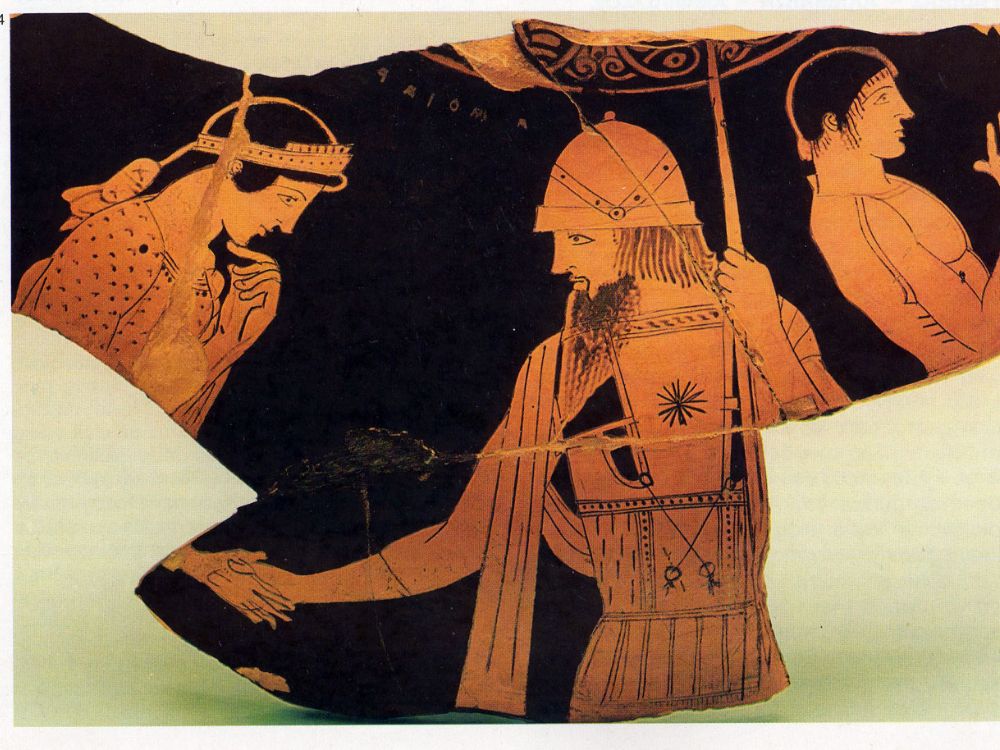
During the battle, Amphiaraus sought to flee from Periclymenus, who wanted to kill him, but Zeus threw his thunderbolt, and the earth opened to swallow and conceal Amphiaraus. That way he became a Chthonic hero and god (Chthonic means ‘under the earth; another famous Chthonic goddess was Persefone, Demeter’s daughter in the cult of Eleusis in Athens).
The Monuments in Amphiareion of Oropos
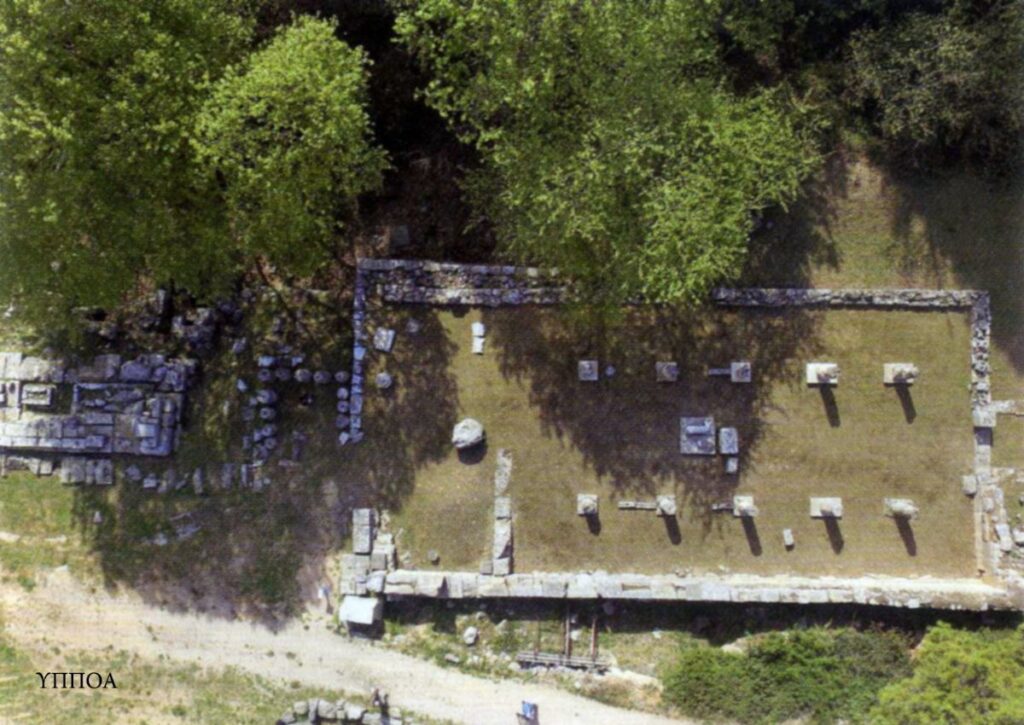
There is a stream of water separating the sanctuary in two, the north and the south side. The north side, which is the most excavated and the one I visited contains the remains of the official buildings, the Stoa, the theater, the temple, and the altar.
The south side contains very few findings of the residential quarters, offices, shops, inns, the agora, and the klepsydra (water clock), similar to the one in the Ancient Agora of Athens.
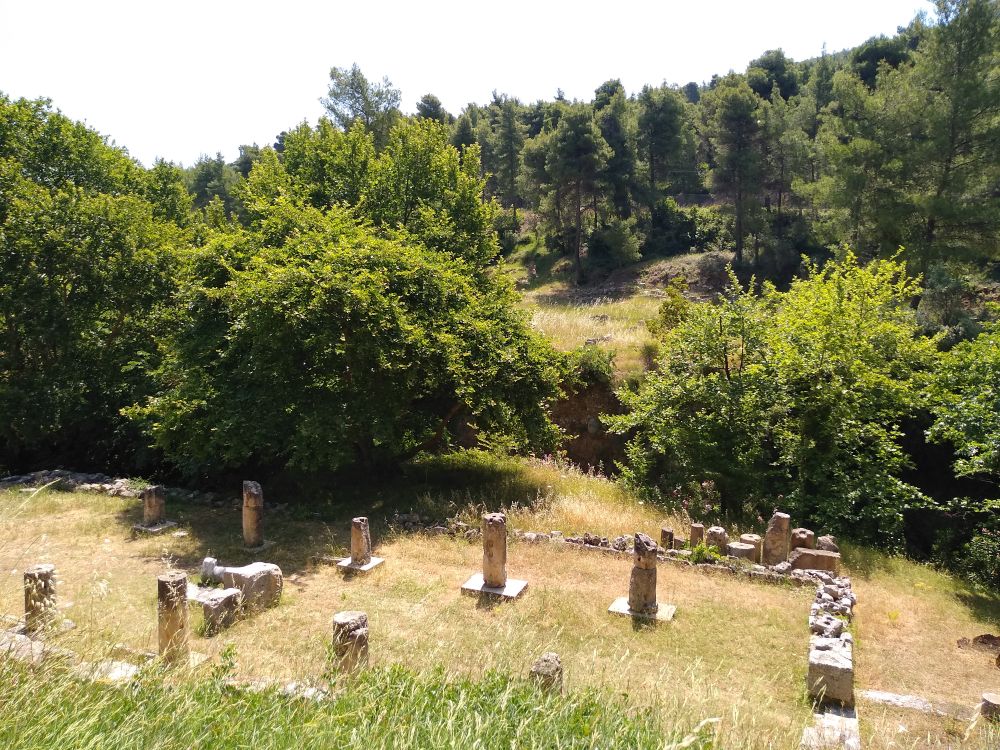
Going downhill from the entrance to the Amphiareion of Oropos, you will see the columns of the temple dedicated to Amphiaraus. Built in the 4th century BCE, it was a six-column Doric and its southern part was washed away by the torrent in the latter part of antiquity.
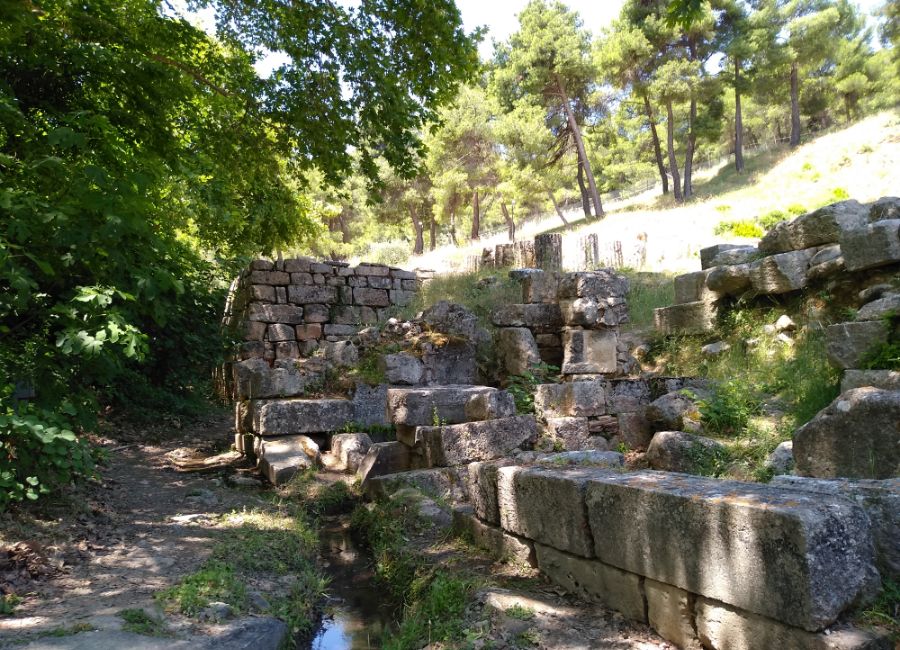
On your right hand, you will see its large altar, located very close to the spring that still gushes out today. The altar and the baths, under shady plane trees, were also built in the 4th century BCE.
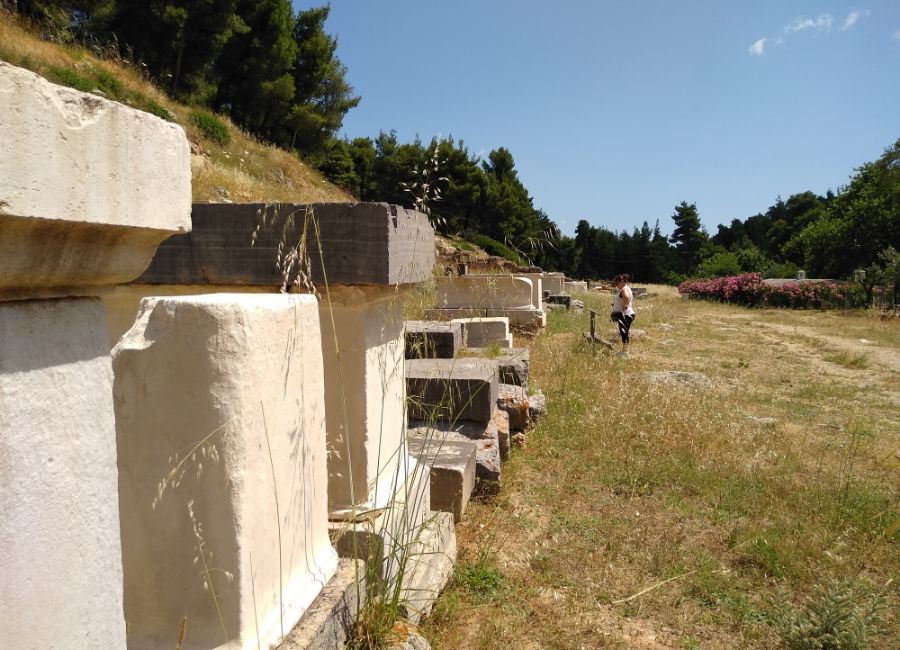
The statues lined the road that connected the sanctuary with the great stoa. More than 25 pedestals have survived with inscriptions in Greek, on which stood statues of dedications to Amphiaraus from heroes, priests, the King of Egypt Ptolemy IV, their wives, and others.
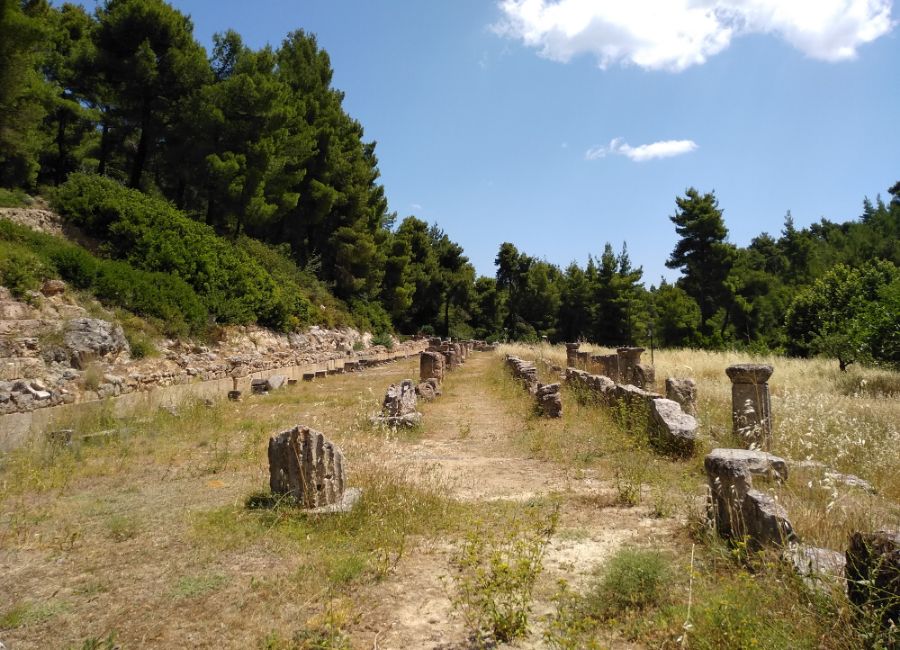
On the left bank are first the baths and immediately after the large 110 m long stoa, a Doric building also built in the 4th century BCE. This stoa was the residence of the visitors and patients of the sanctuary, who came to pray to Amphiaraus for their healing.
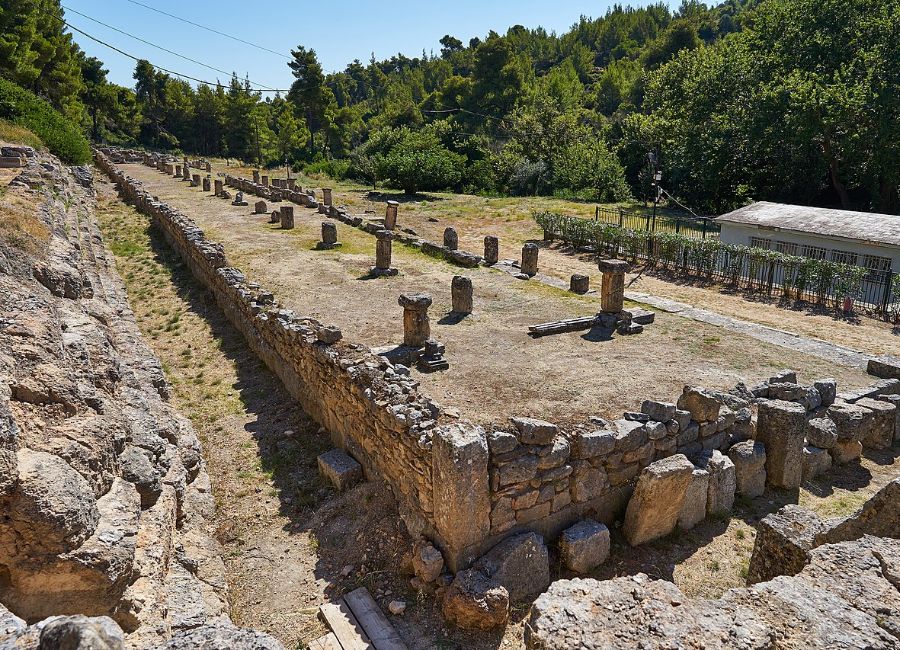
The area in front of the stoa served as a stage for the games that took place in the sanctuary of Amphiareion of Oropos: the annual Games of the Amphiaria Minor and the Great Amphiaria every 4 years.
The Great Amphiaria included musical, athletic, and equestrian competitions in which athletes, scholars, and actors from all over Greece, Italy, and Asia Minor took part.
TIP: The most famous Panhellenic Games in Ancient Greece were held in Olympia, Isthmia, Nemea, and Delphi.
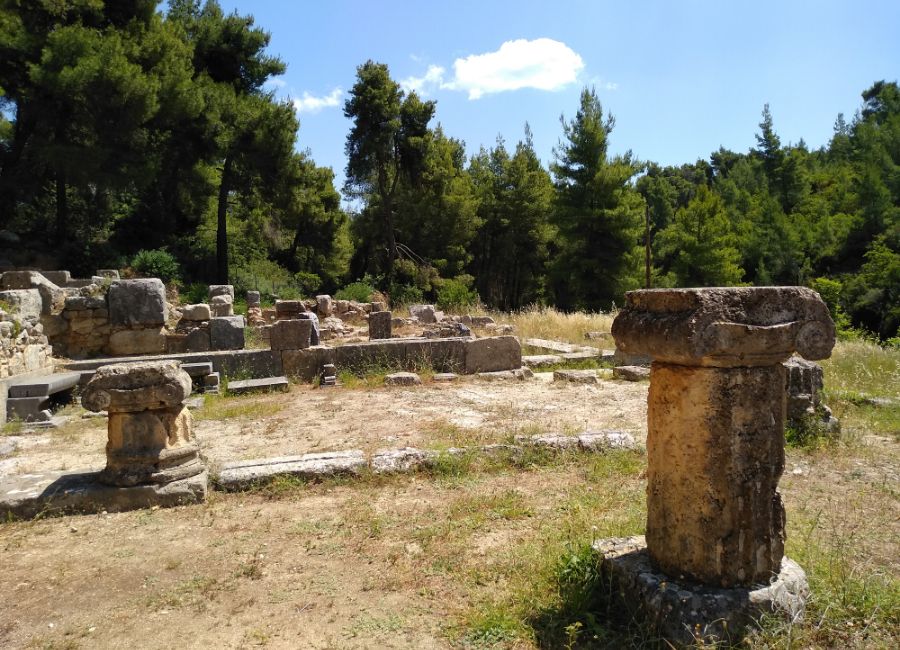
In specially designed rooms at either end of the stoa, the patients slept, and Amphiaraus appeared in their dreams and granted health to some lucky ones, while for most he confined himself to giving advice.
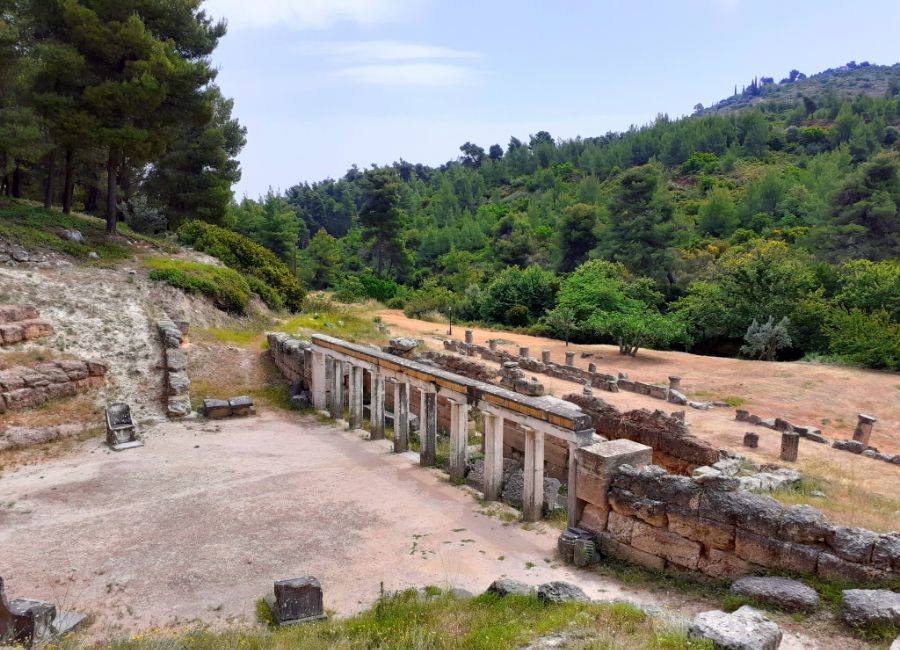
Behind the stoa, the theatre with the famous five marble thrones of the 1st century BCE is dug into the hill. It is a stone theater, with 300 people capacity, and the “koilon”, the place where the spectators sat, is in poor condition today. From the theatre, we enjoy a beautiful panoramic view of the whole archaeological site.
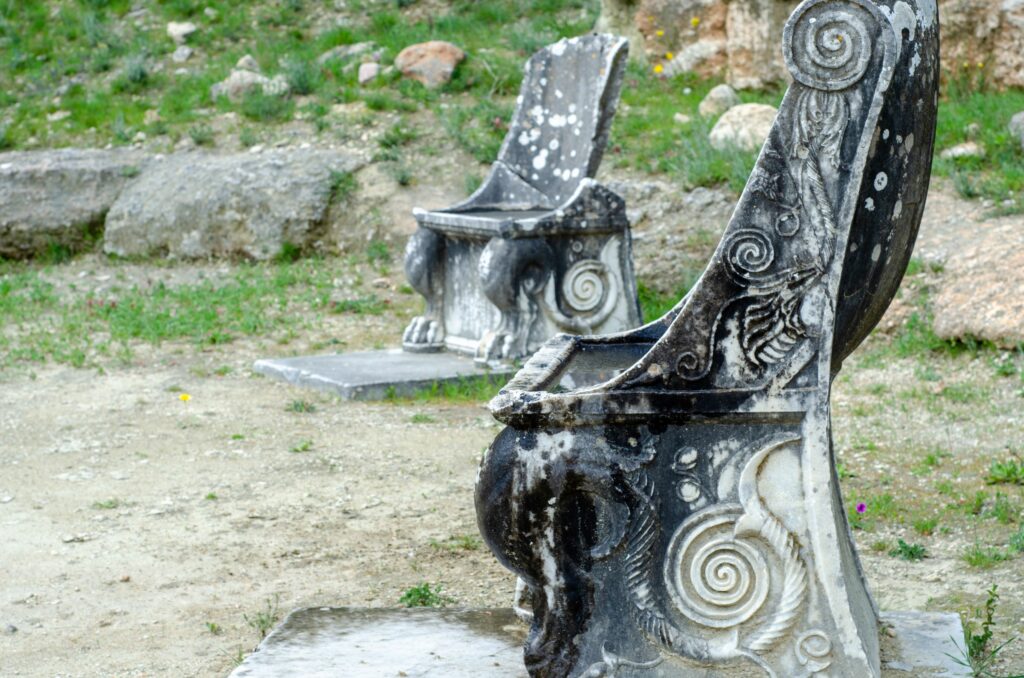
We walked around the beautiful landscape and tried to imagine how it would have been at its full capacity 2.400 years ago. I sometimes wish we had invented the time machine, just to have a glimpse of things in the past, don’t you?
The visit to the sanctuary of Amphiareion of Oropos can be combined with a dive into the nearby Aegean Sea. For the lovers of monasteries, 2.3 km before you reach Amphiareion on your right-hand side lies the Monastery of Theotokos, which you can visit and will be amazed by the architecture, the frescoes, and the gardens.
Famous Art Works Inspired by Amphiaraus
- Homer describes the tragic death of Amphiaraus in detail in the Odyssey.
- Aeschylus wrote his famous tragedy ‘Seven Against Thebes‘ which is considered one of the most important tragedies in the Greek world.
- Aristophanes also wrote a comedy ‘Amphiareos’ where he satirizes the god’s priests.
- Euripides wrote ‘Hypsipyle’ dedicated to the marsh against Thebes.
- Schubert composed the music for the poem ‘Amphiaraus’ written by the romantic poet Theodore Korner (1815).
Other Amphiareion Sanctuaries in Greece
Amphiaraus besides Oropos, had also sanctuaries, in Thebes, Argos, and Sparta.
The most famous ancient sanctuaries in Greece are:
- The Athenian Acropolis, dedicated to the Athens goddess
- The Sanctuary of Zeus at Olympia in the Peloponnese
- The Sanctuary of Apollo at Delphi
- The Sanctuary of Asklepios and the Theatre of Epidaurus in the Peloponnese
Greek History Time Frame
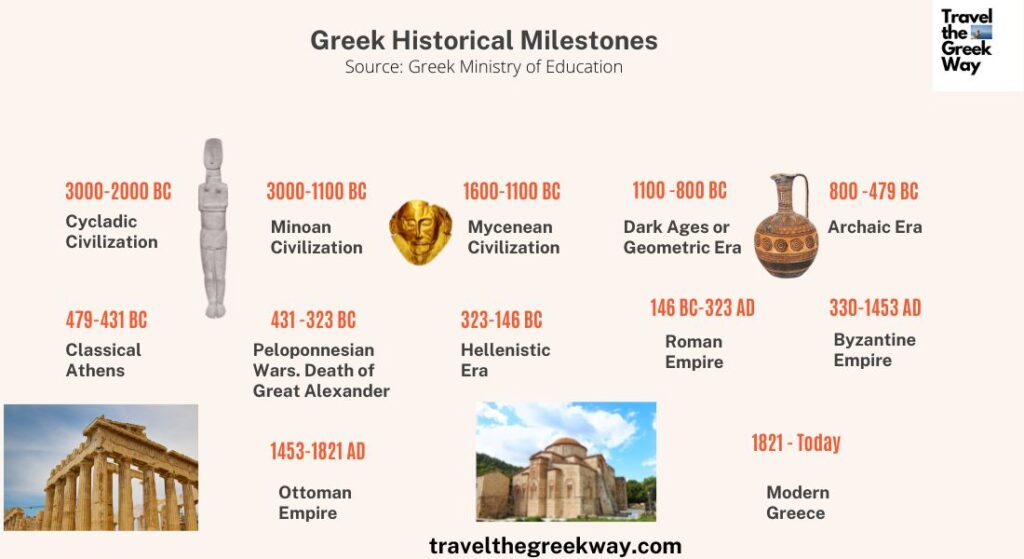
Where to Stay in Oropos
I highly suggest the Country House with Pool and Big Garden. It is quite close to the beach but it has also a large swimming pool in the beautiful garden, ideal if you are a family with small children.
Tips for Visiting Amphiareion
- You can visit the whole site in 30 minutes max
- It is not accessible – no ramp or elevator
- Open between 8.30 am and 3.30 pm, with a general entrance of €3 between April and October and €1,5 between November and March. There is absolutely no need to pre-purchase your ticket, we were 6 people in total when I visited it. However, I did call them up before we set off to Amphiareion just in case they are for some reason closed. Landlines: +30 22950 62144 or +30 210 32.13.122 or +30 210 32.40.563
- You are not allowed to eat or drink inside any archaeological site in Greece, only water is allowed to carry around. There is no café/restaurant inside the site.
- Although some parts of it are under shade, if you are going during summer, I suggest you apply organic sunscreen, wear a white linen shirt, carry some water, and put on a UPF sun hat.
- The road signs indicating an archaeological site in Greece have a brown background
How to Get to Amphiareion
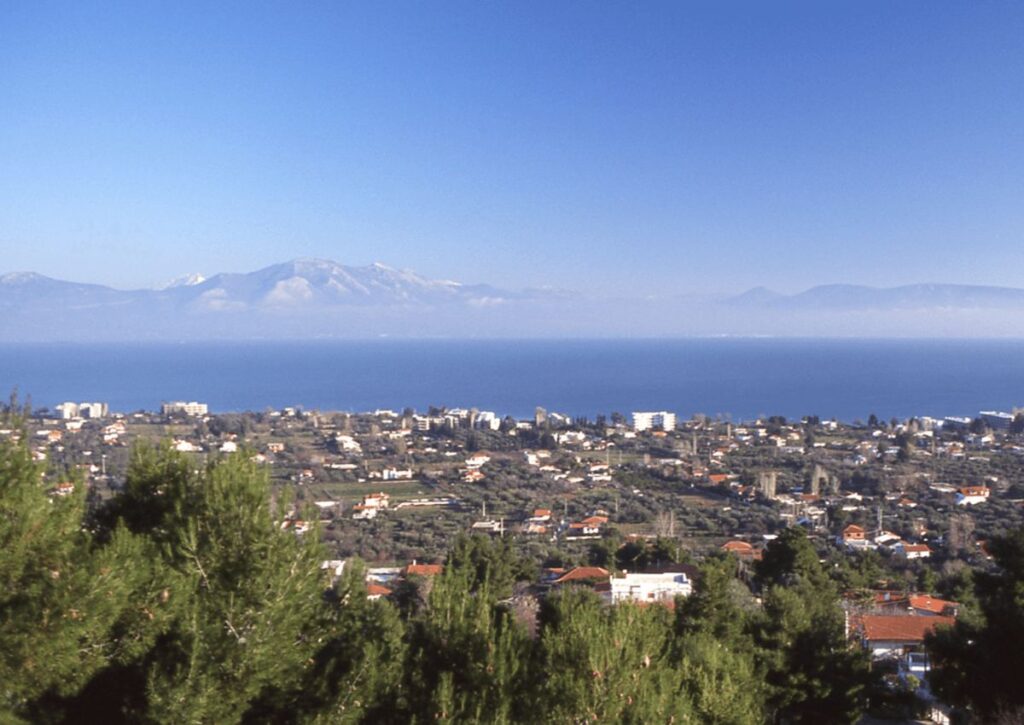
Amphiareion is 47 km far from Athens center and the easiest way to get there is by a private/rental car. Take the national road E75 towards Lamia and take the exit Markopoulo Oropos. From there you just drive towards Oropos and you will see the signs for the Sanctuary. There are also public buses from Athens that go to Oropos but you will probably have to take a taxi for the 10 km distance between Oropos and Amphiareion.
Best Guided Tours to Athens Archaeological Sites
If you love archaeological sites I highly recommend those guided tours from Athens:
Did you visit Amphiareion?
Let me know what you think about visiting Amphiareion in the comments, I’d love to hear whether I managed to get it onto your bucket list! Till next time, Evgenia❤️
Sources
- odysseus.culture.gr
- World History Encyclopedia
Related Posts
Essential Travel Resources for Greece
- ‘Hello’ and ‘Thank You’ in Greek: “Ya sou” and “Efharisto”
- Booking.com: I use Booking.com mostly for Europe. It has over 1 Million properties to choose from, including everything from hotels to apartments and even hostels. And free cancellation!
- Expedia: I use Expedia for the best hotel descriptions and amenities and a rewards points system for the rest of the world.
- All-Inclusive Resorts in Greece
- FerryScanner to book ferries to the Greek Islands
- Rent an Affordable Car in Greece
- Athens Metro Website (timetables and ticket info)
- Map of Athens Metro
- Trains (Hellenic Train)
- Public Buses KTEL
- Get Your Guide: For all your day or multi-day tours and city guide needs, I use Get Your Guide
- Emergency Numbers Anywhere in Greece: AMBULANCE 166 – FIRE 199 – POLICE 100– EMERGENCY NUMBER 112
